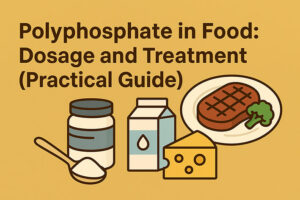
Polyphosphate in Food: Dosage and Treatment (Practical Guide).
Polyphosphates are typically used in the food sector for their capability to improve the texture, look, and service life of numerous items.
The use of food-grade Sodium Tripolyphosphate (STPP, often designated E 451(i) in Europe) in processed foods continues to draw attention from formulation technologists, regulatory teams and food processors. This article presents a regional comparative overview of STPP’s performance in food across Europe, the Americas and Southeast Asia. Emphasis is placed on market trends, application demand, regulatory status and practical implications for the food processing engineer.
According to market-research data, global STPP consumption in 2023 already included a notable volume in food-industry applications. One source estimates that food-processing use of STPP in 2023 exceeded 85 000 metric tons, albeit without a full breakdown by region. :contentReference[oaicite:1]{index=1}
A further segmentation indicates that the Asia-Pacific region (which includes Southeast Asia) accounted for approximately 40-45 % of total STPP market revenue in 2023, followed by North America at around 20-25 % and Europe at roughly 15-20 %. :contentReference[oaicite:2]{index=2} While that figure covers all applications of STPP (not exclusively food), it signals the relative importance of the Asia-Pacific region in demand growth.
For food-grade STPP specifically, its share remains lower than industrial grades (e.g., detergent, water-treatment use), yet its growth rate is stronger. One report estimates food-grade STPP represented about 20-25 % of the total STPP market in 2023 and was the fastest-growing sub-segment. :contentReference[oaicite:3]{index=3}
From a strategic point of view for food technologists: the higher growth of food-grade STPP means that attention must shift to not just functional performance (e.g., moisture retention) but also regional regulatory compliance and supply-chain purity (heavy metals, etc.).
In Europe, the regulatory environment for food additives is well established. The general additive regulation for food is Regulation (EC) No 1333/2008 and the specifications regulation is Commission Regulation (EU) No 231/2012 which sets purity criteria, origin and other identification details. :contentReference[oaicite:6]{index=6}
The additive category covering STPP is E 451(i) (pentasodium tripolyphosphate) among the phosphates (E 450–452). The European Food Safety Authority (EFSA) published in June 2019 a statement that total dietary exposure to phosphate additives may exceed safe levels, and recommended maximum permitted levels in food supplements. :contentReference[oaicite:8]{index=8} While this does not exclusively target STPP, it signals that food-processors in Europe should monitor phosphate intake when using STPP in applications such as water-binding or texture modification.
From an application view, food processing in Europe tends to prioritise regulatory compliance, transparent labelling, and increasingly, clean-label alternatives. As a result, growth of STPP in food may be more modest compared to emerging regions, especially where replacement technologies or lower-phosphate strategies are gaining ground.
In the Americas (North and Latin America), demand for processed and convenience foods supports STPP use. Although publicly available food-grade STPP figures specific to the Americas are scarce, one general market study notes that North America is expected to grow thanks to food‐processing applications and water-treatment sectors. :contentReference[oaicite:9]{index=9}
From a regulatory standpoint, in the United States the Food and Drug Administration (FDA) authorises STPP under certain food categories. For example, one reference suggests STPP in cured meats at up to 0.5 % and in seafood at up to 2 % of product weight. :contentReference[oaicite:11]{index=11} Technicians must verify the specific regulation in 21 CFR sections or applicable state regulation.
For Latin America, guidance is more fragmented: national standards differ, and multinational formulators need to verify each country’s food-additive list and acceptable use level. The growth of processed-seafood and frozen prepared meals in Southeast Latin America suggests increasing interest in moisture-retention additives such as STPP.
The Southeast Asian market (including countries such as Thailand, Vietnam, Indonesia, Malaysia, Singapore) offers strong growth potential for food-grade STPP. Rapid urbanisation, rising disposable income, expansion of seafood and poultry processing plants, and increased frozen-meal consumption all support demand. Although precise regional figures for food-grade STPP are difficult to locate, the overall APAC region dominated the STPP market share in 2023 (≈ 40-45 %) ─ illustrating appetite for the technology. :contentReference[oaicite:12]{index=12}
For technicians, this region demands special attention to supply-chain quality (phosphate purity, heavy-metal specs), logistics (import/export customs, tariffs), and localisation of regulatory compliance (each country may have its own additive list or food-additive regulation). Many processors in Southeast Asia adopt STPP for seafood moisture retention, given proximity to major export markets.
From a food-processing perspective, STPP delivers key functionalities: improving water-holding capacity (WHC), reducing cooking loss, enhancing texture and yield, and stabilising proteins in meat, poultry and seafood products. For example, STPP is described as “mainly used for retaining moisture in fish” in an additive-use reference. :contentReference[oaicite:13]{index=13}
Important for technologists: effective use of STPP requires correct grade (food-grade), strict adherence to permitted levels, and attention to synergy with salt, phosphates, pH, and processing parameters (e.g., injection, tumbling, freezing). Because regions differ in acceptable levels, one cannot simply apply a formula valid in Europe to a plant in Vietnam without adjustment.
Also of note: given regulatory and consumer pressure for “clean-label” formulations, companies are exploring partial replacement of STPP with alternatives (e.g., low-phosphate blends, enzyme systems, natural hydrophilic fibres). While replacements may reduce phosphate exposure, they may also increase cost or reduce yield — so trade-offs must be managed.
For a food-technician or compliance manager, the following checklist is critical when specifying STPP for food use:
Given the above regional insights, the following recommendations apply for food-processing technologists engaged with STPP in meat, seafood, poultry or frozen convenience-meal operations:
In summary: STPP remains a valuable food-processing additive offering significant functional benefits. But its regional performance is shaped not only by demand growth (strongest in Southeast Asia) but also by regulatory stringency and consumer/market trends (particularly in Europe). Technologists should adopt a region-aware mindset combining functionality, compliance and supply-chain assurance.

Polyphosphates are typically used in the food sector for their capability to improve the texture, look, and service life of numerous items.
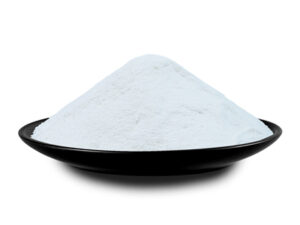
Sodium tripolyphosphate (STPP) is a widely used chemical in various industries, from detergents to food processing.
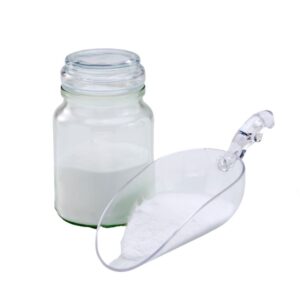
Salt tripolyphosphate (STPP) , likewise called sodium triphosphate or pentasodium triphosphate , is more than just a chemical compound– it’s a workhorse throughout several sectors.
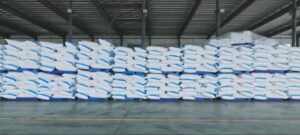
Sodium tripolyphosphate (STPP) is manufactured through controlled reactions of phosphoric acid and sodium compounds, with patented industrial processes optimizing purity and yield.
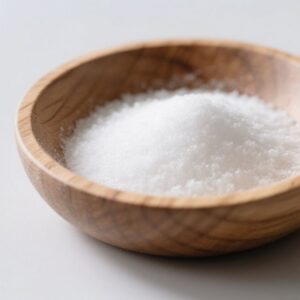
Global food-grade sodium tripolyphosphate (STPP) prices in Q4 2025 remain stable with slight increases driven by higher energy and logistics costs, while demand from meat and seafood processing sustains market balance.
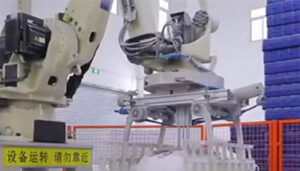
Sodium tripolyphosphate (STPP) is an essential additive used in many industries, and its market is evolving due to environmental and economic trends.

Global food-grade sodium tripolyphosphate (STPP) prices in Q4 2025 remain stable with slight increases driven by higher energy and logistics costs, while demand from meat and seafood processing sustains market balance.

This guide provides insights into the technological advances, regulatory frameworks, and cost factors affecting food and aquatic products, highlighting sustainability challenges and opportunities in 2025.
Factory‑direct supply of food‑grade STPP with free samples, fast delivery and certified quality for global food‑processing applications

This guide provides insights into the technological advances, regulatory frameworks, and cost factors affecting food and aquatic products, highlighting sustainability challenges and opportunities in 2025.

This guide covers the uses, benefits, risks, dosages, and health concerns of polyphosphates in food, with an overview of regulatory standards and emerging alternatives.

This article examines how raw‑material purity, plant upgrades, and regulatory trends shape the global supply and capacity outlook for food‑grade sodium tripolyphosphate.

Global food-grade sodium tripolyphosphate (STPP) prices in Q4 2025 remain stable with slight increases driven by higher energy and logistics costs, while demand from meat and seafood processing sustains market balance.
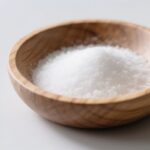
Global food-grade sodium tripolyphosphate (STPP) prices in Q4 2025 remain stable with slight increases driven by higher energy and logistics costs, while demand from meat and seafood processing sustains market balance.

Sodium tripolyphosphate (STPP) remains an essential multifunctional additive in food processing.

Overview of Sodium Tripolyphosphate (STPP) in Food Applications
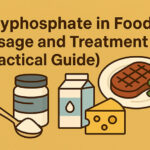
Polyphosphates are typically used in the food sector for their capability to improve the texture, look, and service life of numerous items.

Sodium tripolyphosphate (STPP) and various other phosphate ingredients prevail in today’s food landscape– but just how much do we truly know about what we’re taking in?
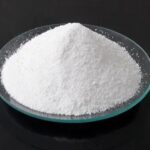
Sodium Tripolyphosphate (STPP) serves as a crucial food additive that improves texture, moisture retention and shelf life in processed seafood and meat products.

Sodium tripolyphosphate improves food texture, yield, and shelf life, making it a vital additive in industrial food processing.
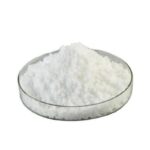
Sodium tripolyphosphate boosts food yield and texture but faces rising scrutiny over health and safety, prompting regulation and innovation across the industry.

Food Grade Sodium Tripolyphosphate: A detailed purchase guide comparing suppliers and highlighting its essential applications in the food industry.
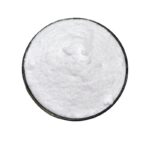
Sodium tripolyphosphate (STPP) is widely used as a food additive in processed foods—international authoritative organizations such as the FDA and WHO have recognized its safety. However, the Acceptable Daily Intake (ADI) standard must be followed, and consumers can make scientific choices by reading the ingredient list.

Sodium tripolyphosphate (STPP) is a common chemical compound used in detergents, food processing, and industrial applications.
WhatsApp us